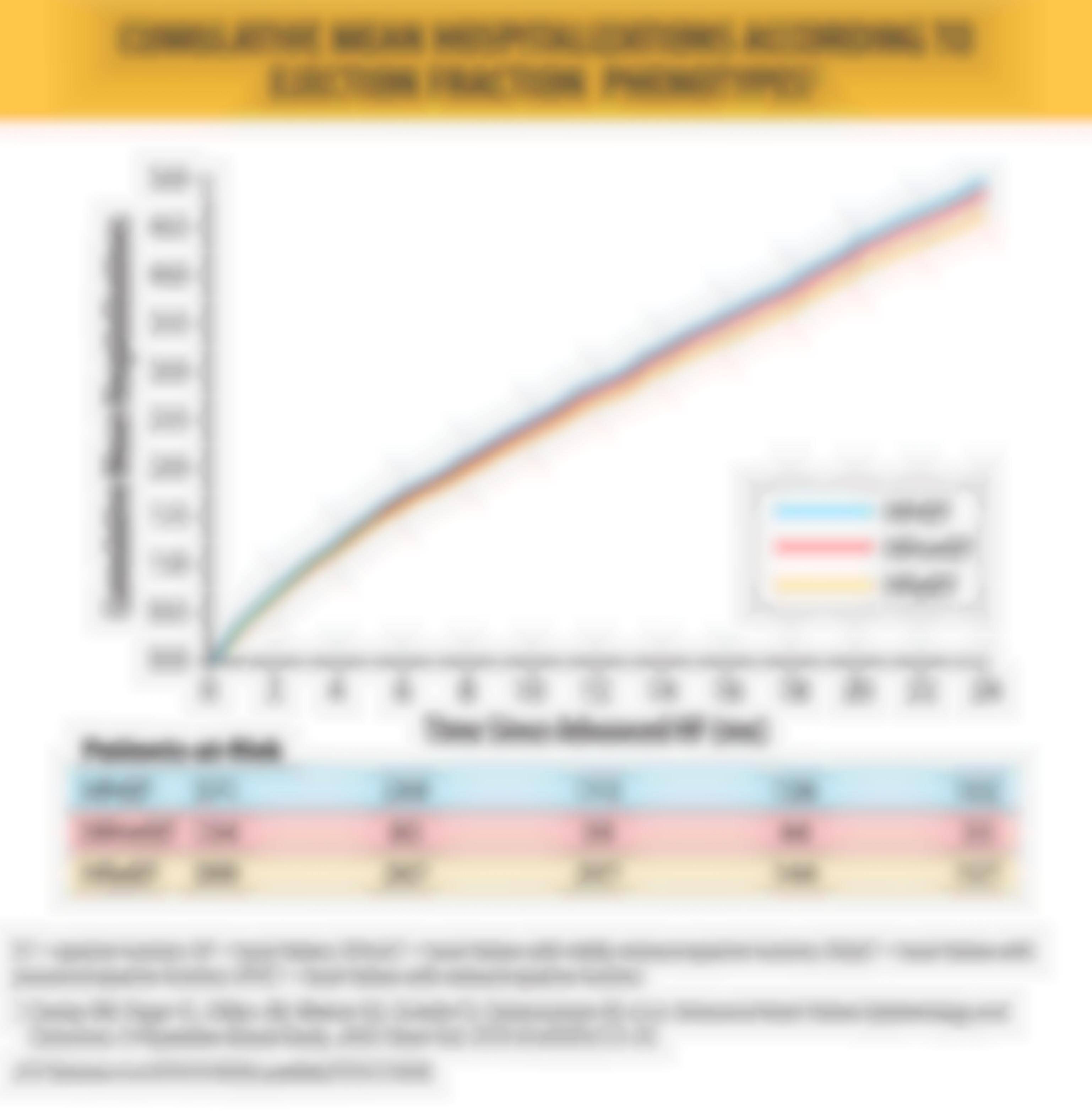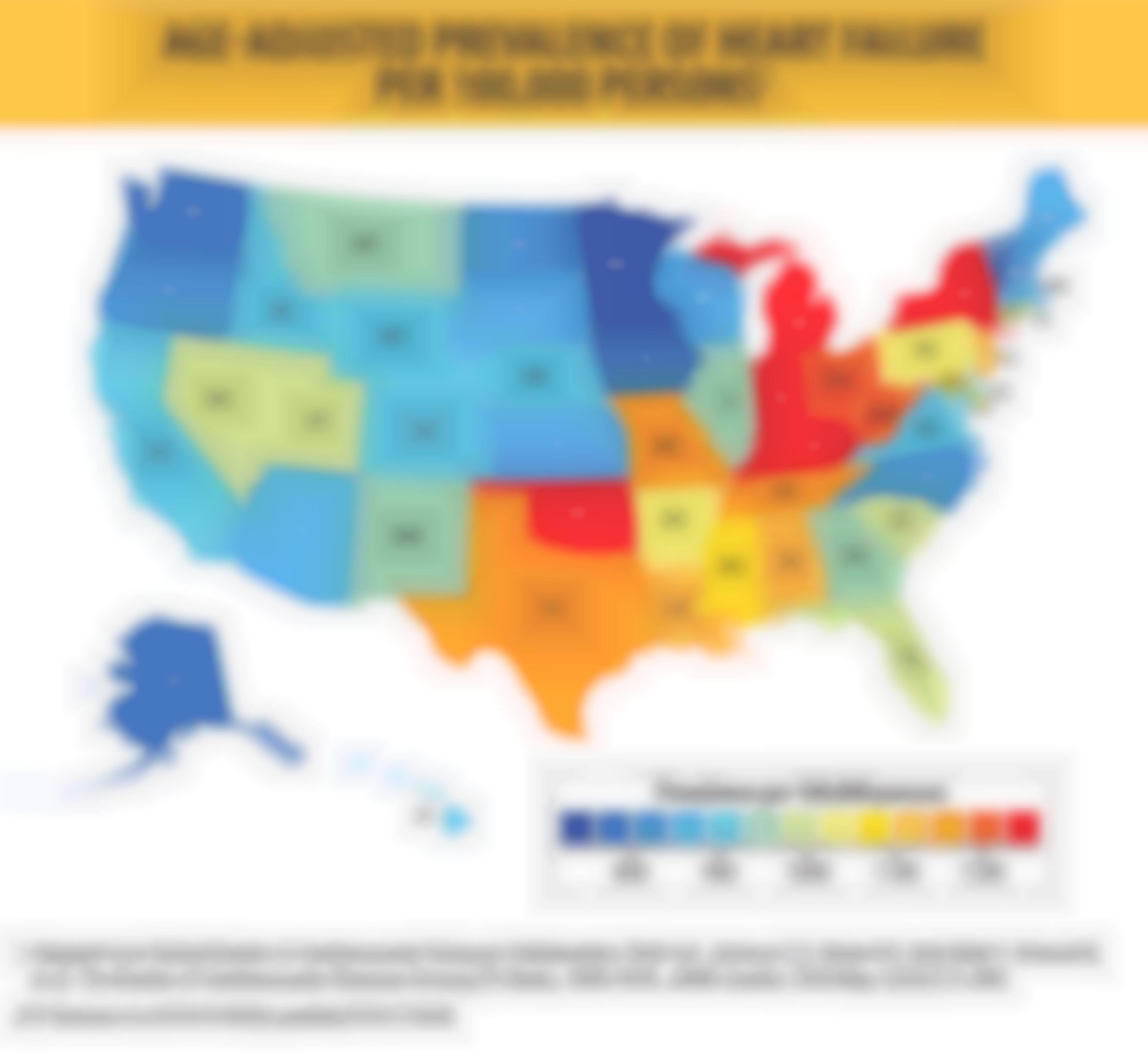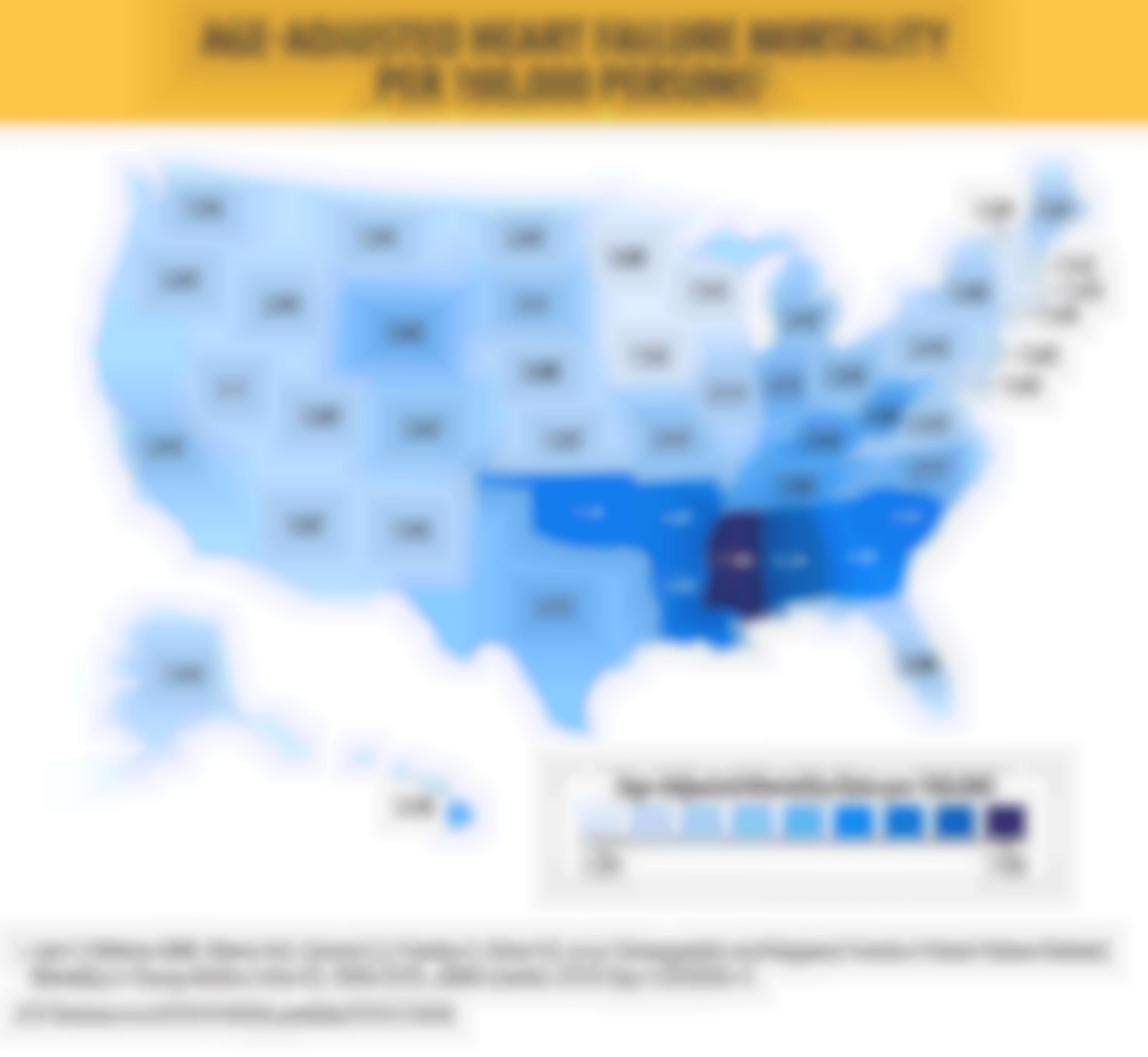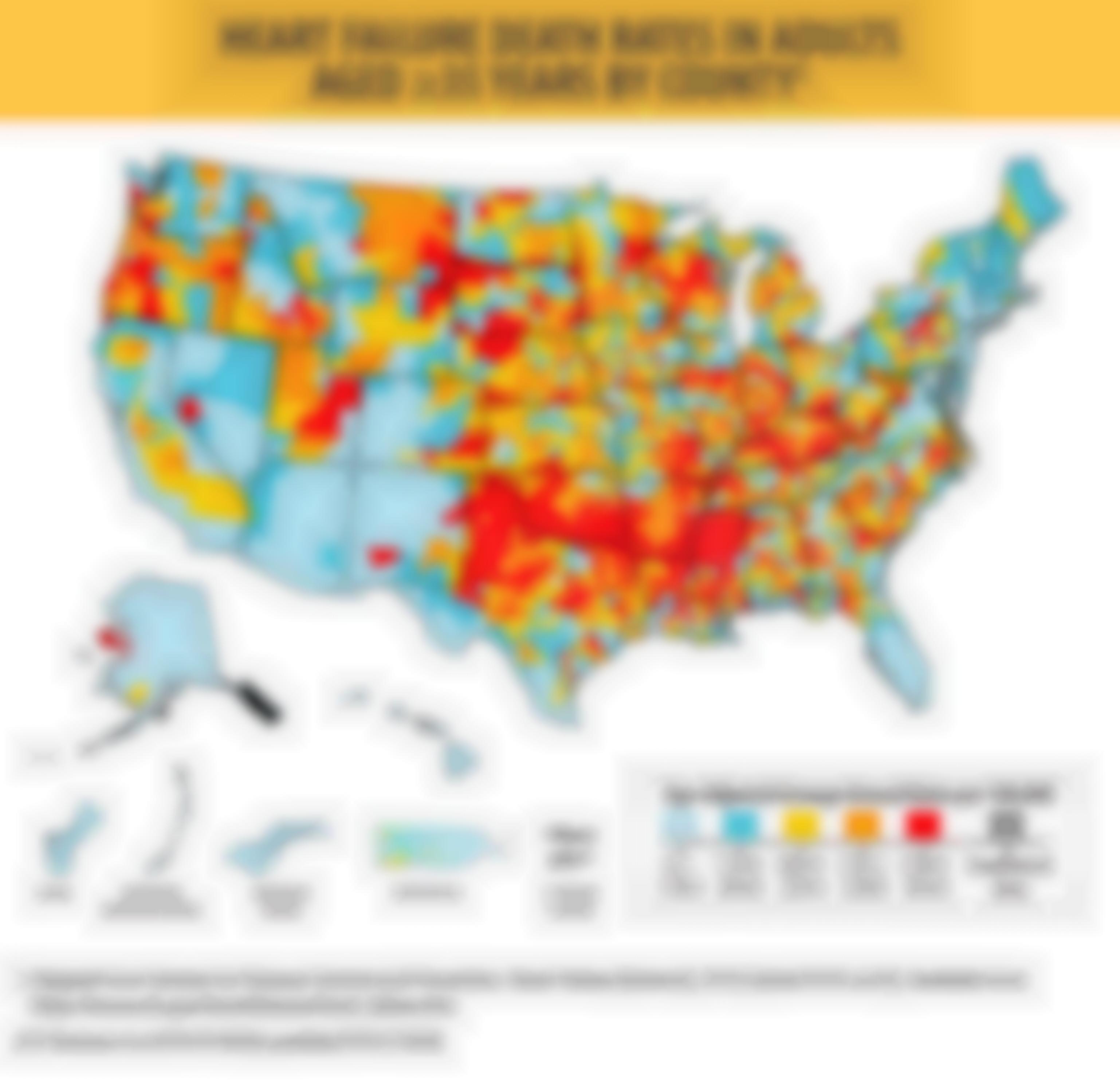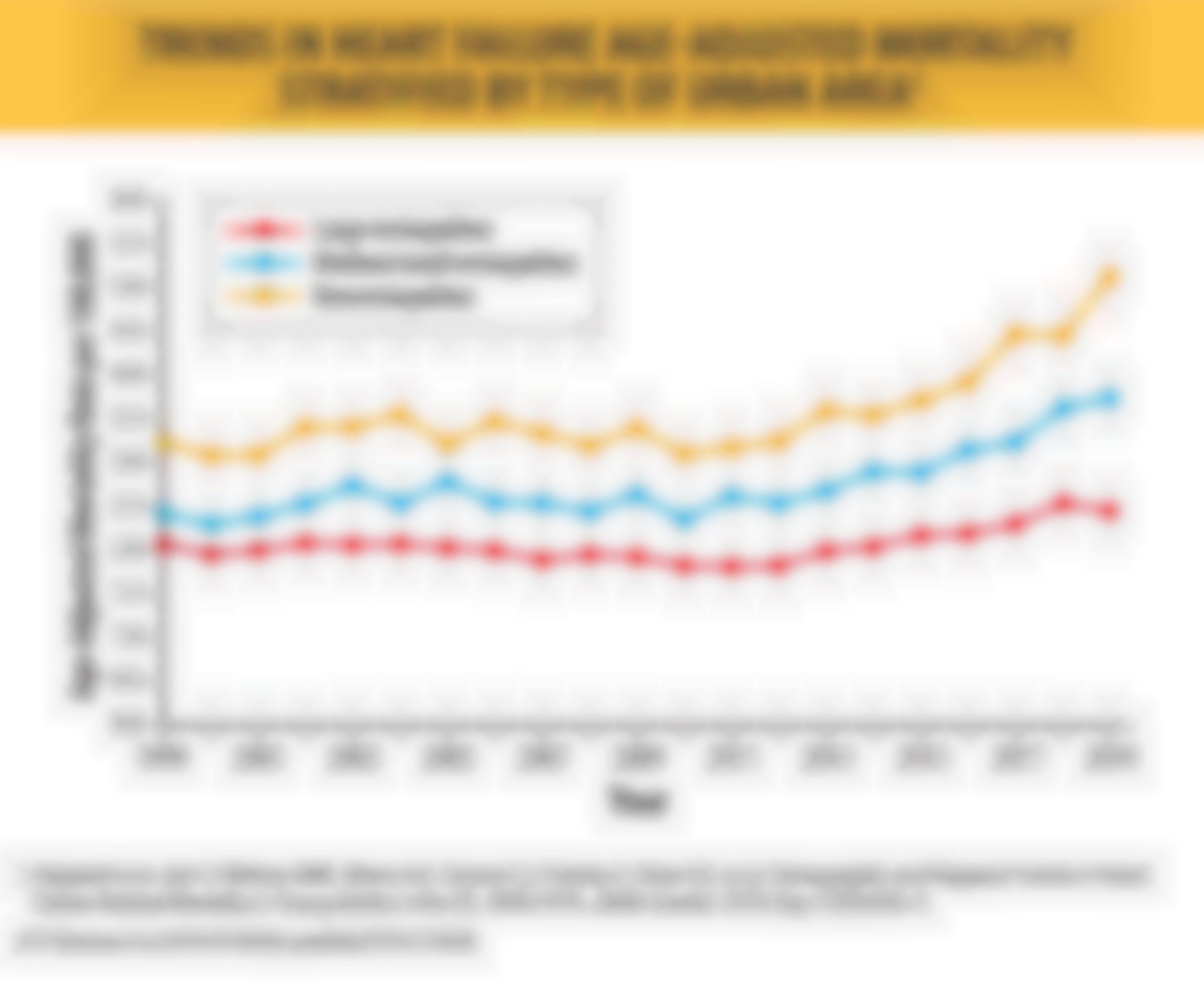Geographic and Regional Variations in the United States
Data Year: 2023
Key Points
- Within the US there are geographic variations in the prevalence of HF. A low HF prevalence has been reported in the northern Great Plains, and Western states, and the highest prevalence of HF has been reported in Midwestern and Eastern states (Fig. 38). HF age-standardized prevalence rates range from 760 cases per 100,000 persons in Minnesota to as high as 1319 cases per 100,000 persons in New York.
- There is also significant geographic variation across the US in HF death rates, with the lowest rate of HF deaths reported in some Western, Northwestern, and Northeastern states and the highest death rates reported in some states in the Midwest and the Southeast (Fig. 39). HF age-standardized death rates range from as low as 1.09 deaths per 100,000 persons in Minnesota to as high as 7.98 deaths per 100,000 persons in Mississippi. The annual age-adjusted HF mortality rate has been increasing in the United States since 2011, and this trend has been consistent across all 4 US regions. The greatest number of HF deaths are observed in the Midwest, followed by the South, West and Northeast.
- HF prevalence and HF mortality rates are not fully aligned geographically, which suggests a role of contributing factors such as underdiagnosis and access to treatment. Further, significant variation in HF mortality is seen within individual states by county (Fig. 40) and by the level or urbanization (Fig. 41) highlighting the impact of SDoH disparities on HF mortality.
- In addition, there are regional differences in the proportion of patients diagnosed with HFrEF and HFpEF, which likely relates to varied population demographics across the US, including age, racial and ethnic background, and comorbidity prevalence. Data on hospital discharges across the 4 US regions stratified by HFrEF and HFpEF are shown in Table 13.
- Across all geographic regions, Black women and men experience higher AAMRs compared with White women and men. Since it is projected that, after 2025, there will be reduction of cardio-vascular risk in White individuals compared with individuals of minoritized racial and ethnic groups, it is likely that the geographic variation in HF prevalence and mortality described above will further increase.

